
Filter News
Area of Research
- (-) Computer Science (1)
- (-) Energy Science (34)
- (-) Materials (41)
- Advanced Manufacturing (2)
- Biology and Environment (17)
- Computational Engineering (1)
- Fusion and Fission (7)
- Fusion Energy (7)
- Isotopes (25)
- Materials for Computing (7)
- Mathematics (1)
- National Security (20)
- Neutron Science (5)
- Nuclear Science and Technology (17)
- Nuclear Systems Modeling, Simulation and Validation (1)
- Quantum information Science (2)
- Supercomputing (13)
News Topics
- (-) Advanced Reactors (9)
- (-) Clean Water (10)
- (-) Cybersecurity (11)
- (-) Isotopes (13)
- (-) Polymers (21)
- 3-D Printing/Advanced Manufacturing (90)
- Artificial Intelligence (19)
- Big Data (11)
- Bioenergy (30)
- Biology (12)
- Biomedical (10)
- Biotechnology (4)
- Buildings (38)
- Chemical Sciences (33)
- Composites (19)
- Computer Science (48)
- Coronavirus (14)
- Critical Materials (19)
- Energy Storage (85)
- Environment (64)
- Exascale Computing (4)
- Fossil Energy (2)
- Frontier (3)
- Fusion (7)
- Grid (41)
- High-Performance Computing (11)
- Hydropower (3)
- Irradiation (1)
- ITER (1)
- Machine Learning (14)
- Materials (94)
- Materials Science (90)
- Mathematics (3)
- Mercury (3)
- Microelectronics (1)
- Microscopy (29)
- Molten Salt (3)
- Nanotechnology (41)
- National Security (6)
- Neutron Science (42)
- Nuclear Energy (22)
- Partnerships (16)
- Physics (28)
- Quantum Computing (3)
- Quantum Science (15)
- Security (7)
- Simulation (4)
- Space Exploration (5)
- Statistics (1)
- Summit (7)
- Transportation (70)
Media Contacts

A team of researchers at Oak Ridge National Laboratory have demonstrated that designed synthetic polymers can serve as a high-performance binding material for next-generation lithium-ion batteries.
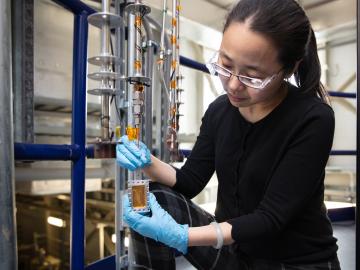
Researchers at the Department of Energy’s Oak Ridge National Laboratory, Pacific Northwest National Laboratory and Washington State University teamed up to investigate the complex dynamics of low-water liquids that challenge nuclear waste processing at federal cleanup sites.
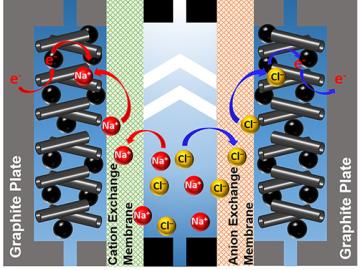
A team of scientists led by Oak Ridge National Laboratory used carbon nanotubes to improve a desalination process that attracts and removes ionic compounds such as salt from water using charged electrodes.
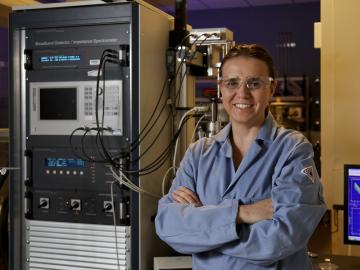
Vera Bocharova at the Department of Energy’s Oak Ridge National Laboratory investigates the structure and dynamics of soft materials.
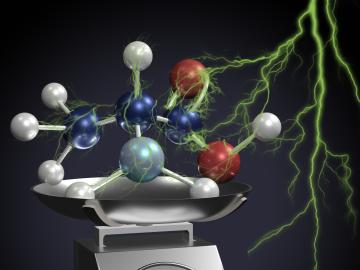
OAK RIDGE, Tenn., Jan. 31, 2019—A new electron microscopy technique that detects the subtle changes in the weight of proteins at the nanoscale—while keeping the sample intact—could open a new pathway for deeper, more comprehensive studies of the basic building blocks of life.

Carbon fiber composites—lightweight and strong—are great structural materials for automobiles, aircraft and other transportation vehicles. They consist of a polymer matrix, such as epoxy, into which reinforcing carbon fibers have been embedded. Because of differences in the mecha...
Physicists turned to the “doubly magic” tin isotope Sn-132, colliding it with a target at Oak Ridge National Laboratory to assess its properties as it lost a neutron to become Sn-131.

Scientists at the Department of Energy’s Oak Ridge National Laboratory used neutrons, isotopes and simulations to “see” the atomic structure of a saturated solution and found evidence supporting one of two competing hypotheses about how ions come

Oak Ridge National Laboratory scientists have developed a crucial component for a new kind of low-cost stationary battery system utilizing common materials and designed for grid-scale electricity storage. Large, economical electricity storage systems can benefit the nation’s grid ...
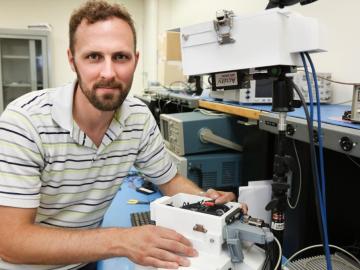
As leader of the RF, Communications, and Cyber-Physical Security Group at Oak Ridge National Laboratory, Kerekes heads an accelerated lab-directed research program to build virtual models of critical infrastructure systems like the power grid that can be used to develop ways to detect and repel cyber-intrusion and to make the network resilient when disruption occurs.


